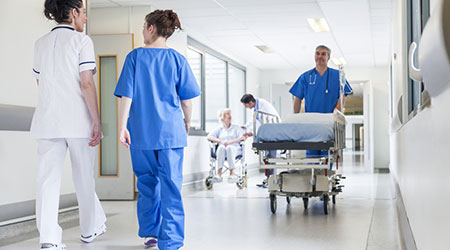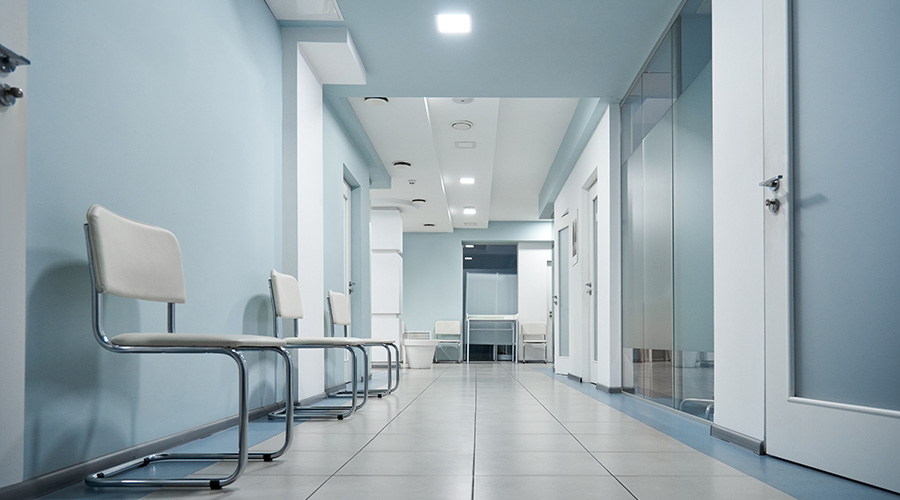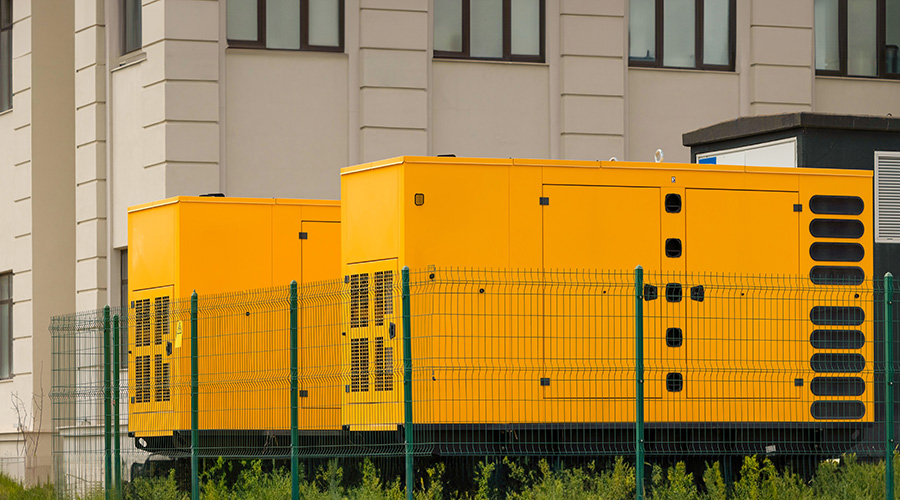Hospitals and other healthcare facilities are in the business of improving their patients’ health, and keeping these facilities safe and clean are vital keys to their success. And while clean floors are important for the image of healthcare facilities, the safety of patients, staff and visitors should always be a primary goal of your cleaning efforts.
According to the National Safety Council, falls are one of the leading causes of unintentional injuries in the United States, accounting for approximately 8.9 million visits to the emergency department annually. Falls also are the second-leading cause of unintentional death in homes and communities, resulting in more than 25,000 fatalities in 2009.
Unfortunately, many healthcare facilities have slippery tile or vinyl composite flooring that can contribute to slip and fall accidents. Slip and fall incidents involving healthcare employees frequently result in disabling injuries that affect their ability to do their jobs and care for patients.
According to the U.S. Bureau of Labor Statistics, in 2009 the incidence rate of lost-workday injuries from slips, trips, and falls on the same level in hospitals was 38.2 per 10,000 employees. This was 90 percent greater than the average rate for all other private industries combined (20.1 per 10,000 employees).
Slips, trips and falls are the second most common cause of lost-workday injuries in hospitals. These accidents can result in serious injuries, lost workdays, reduced productivity and workers’ compensation claims. In addition, patient falls often result in permanent disability and even death.
Contaminants on the floor are the leading cause of slip, trip and fall incidents in healthcare facilities. Water, other fluids and soap build up can make floors slippery, however, cleaning floors correctly will help minimize the risk of slipping.
After cleaning, test your floors to determine the coefficient of friction or slip-resistant rating. Coefficient of friction represents the amount of friction provided on a dry surface when tested with a slip meter, and indicates whether your floors have traction characteristics that help prevent slipping. This testing will also inform you if your floors are safe and have been properly cleaned.
Mistakes in chemical dilution increase the risk of accidents by leaving floors slippery. Some custodians believe that if a little cleaning chemical works well, a lot of cleaner will work even better. This is a false — and dangerous — assumption. Manufacturers’ dilution instructions must be strictly followed or slip-and-fall accidents may result.
To minimize these risks while keeping your floors clean and safe, use a chemical-free cleaning technology. Chemical-free cleaning makes floors safer by removing accumulated chemical buildup that makes floors slippery. Choose scrubbers and other floor cleaning equipment and technologies that are certified by the National Floor Safety Institute (NFSI) as “high traction.” Using these products can make your floors much safer for patients, employees and visitors.
In addition, look for scrubbers that feature excellent water pickup. This will ensure floors are clean and dry as soon as possible to reduce the chance of slip and fall accidents. Using chemical-free cleaning technology combined with excellent water pickup also enables daytime cleaning with less risk of accidents.
Being proactive about the health and safety of everyone in their facility should be a top priority for any health care operation. Selecting products designed to clean effectively while also reducing the risk of slip and fall accidents, is a smart and cost-effective way to enhance the health and safety of patients, staff and visitors.
Chris Wetmore is the director of healthcare and BSC, Tennant Company.

 How Health Systems Are Rethinking Facilities Amid Margin Pressure
How Health Systems Are Rethinking Facilities Amid Margin Pressure Ground Broken on New Medical Office Building in Scottsdale, AZ
Ground Broken on New Medical Office Building in Scottsdale, AZ University of Texas Gifted $100M for New Medical Center
University of Texas Gifted $100M for New Medical Center Beyond Backup Generators: Building Layered Energy Resilience
Beyond Backup Generators: Building Layered Energy Resilience Shannon Health System to Acquire Scenic Mountain Medical Center
Shannon Health System to Acquire Scenic Mountain Medical Center